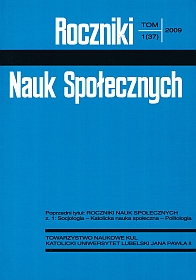Ethnic Transformations in the Baltic States at the Break of the 20th Century
Abstract
The article is devoted to ethnic changes occurring on the territories of Lithuania, Latvia and Estonia in the last decades of the 20th and at the beginning of the 21st century. After an introduction in which historical-political situation is discussed, the next part of the article has a dualistic character.
In the first part the ethnic situation of the three Baltic republics in the Soviet period are discussed. These were the years of intensive processes of Sovietization and Russification. A lot of migrants from other Soviet republics came to the Lithuanian, Latvian and Estonian Soviet republics. The newcomers who spoke Russian influenced their ethnic structure. At the same time they marginalized their mother tongues. The demographic-ethnic questions were documented with the data coming from the Soviet censuses conducted in 1959, 1970, 1979 and 1989.
The second part of the text is concerned with the ethnic situation after Lithuania, Latvia and Estonia gained independence. On the basis of censuses and estimates new tendencies in ethnic changes are defined. They result from mass departures of the Russian-speaking population and from the increase of importance of the three native nations. The processes are documented with statistical data.
The final effect of the work is a demographic-ethnic balance-sheet in a dynamic formula.
Copyright (c) 2009 Roczniki Nauk Społecznych

This work is licensed under a Creative Commons Attribution-NonCommercial-NoDerivatives 4.0 International License.


